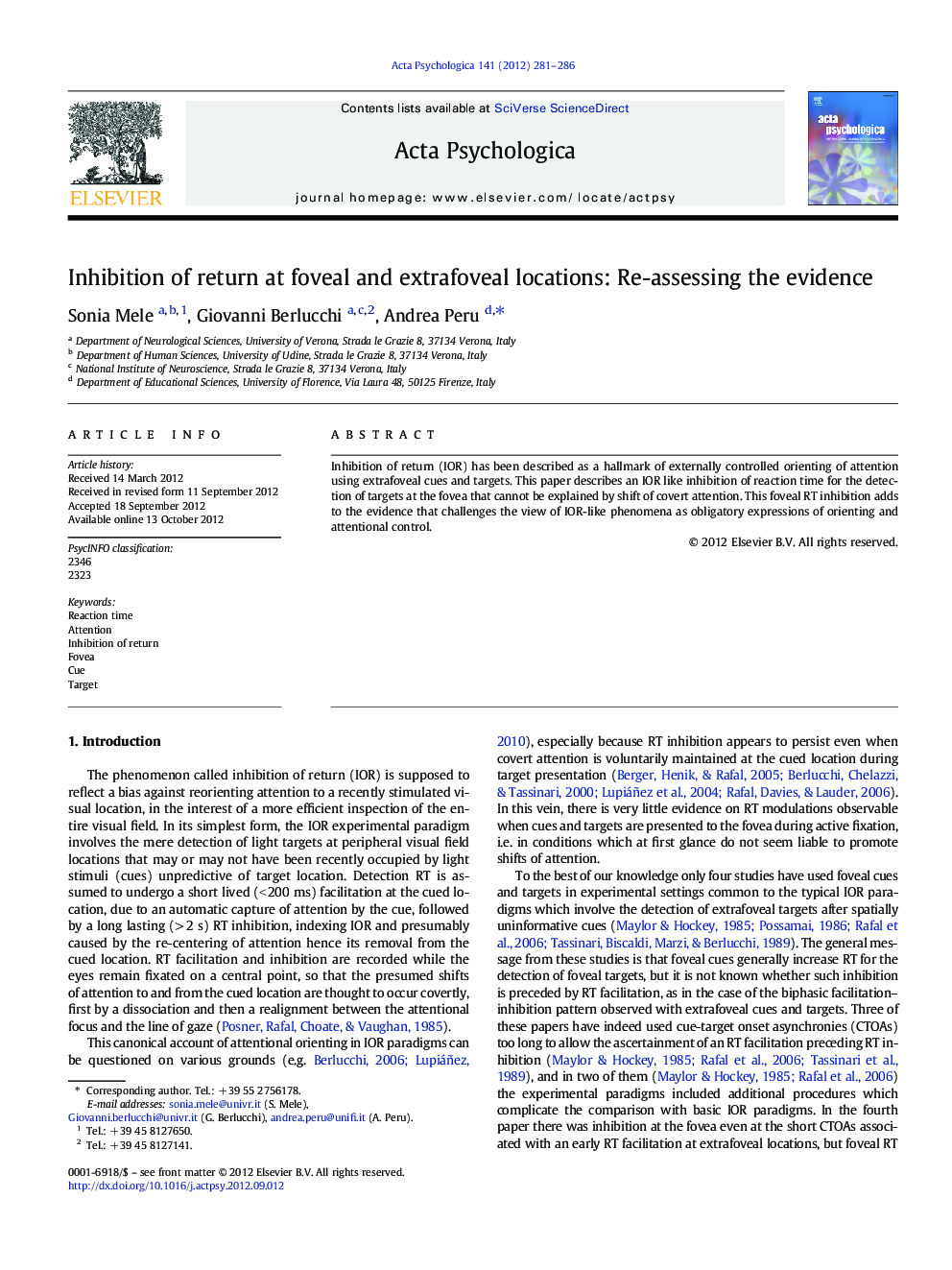| Article ID | Journal | Published Year | Pages | File Type |
|---|---|---|---|---|
| 919950 | Acta Psychologica | 2012 | 6 Pages |
Inhibition of return (IOR) has been described as a hallmark of externally controlled orienting of attention using extrafoveal cues and targets. This paper describes an IOR like inhibition of reaction time for the detection of targets at the fovea that cannot be explained by shift of covert attention. This foveal RT inhibition adds to the evidence that challenges the view of IOR-like phenomena as obligatory expressions of orienting and attentional control.
► We used a basic IOR paradigm with extrafoveal (EF) and foveal (F) cues and targets. ► Cues produced different effects on RT to F and EF targets at different CTOAs. ► At EF positions an early small facilitation was followed by a larger inhibition. ► There was always a cue-induced inhibition even at a constantly attended fovea. ► Findings challenge the view that IOR is always an expression of attentional control.
